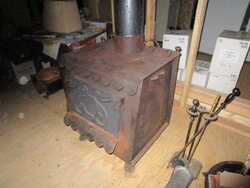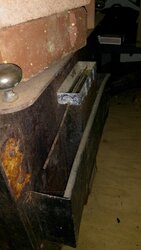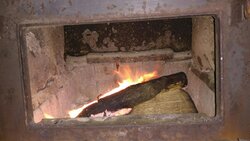Hi folks! First time posting to this forum and we're also first time owners of a wood stove (woohoo!!). We inherited a stove from a friend but unfortunately the friend's grand-kids went to town on the thing with hammers and sledgehammers before we got it and I'm sure it's missing parts. As far as I can tell it's an old Earth Stove (whom I believe are now out of business). I'm attaching some pictures of it. As far as I can tell it's missing the automated temperature control unit, the bricks on the bottom of the stove (the other bricks are cracked), it my be missing other items as well but to an inexperienced operator I have no idea (damper maybe? air vents?).
Overnight I'm blowing through about 6-8 pieces of hardwood a night and it still isn't putting out the heat that I really want it to. My question is do you all think it's safe to use this unit? Do you think it's worth repairing or should we just spend the money for a new stove? Any help you all could provide would be much appreciated!



Overnight I'm blowing through about 6-8 pieces of hardwood a night and it still isn't putting out the heat that I really want it to. My question is do you all think it's safe to use this unit? Do you think it's worth repairing or should we just spend the money for a new stove? Any help you all could provide would be much appreciated!



Last edited by a moderator:


 I just want to make sure I understand everyone's comments correctly. So this stove is not safe because it is not installed 36 inches from the nearest wall (I think it's a foot away right now) and it's not on a hearth/no ember protection. I also hear that there are more effective stoves out and it seems that it is not worth the money to repair it (when it comes down to long term cost recouped based on efficiency)? Would that be a correct assumption? Also, if we move it and get a hearth under their would you say it would be safe to opperate in its present condition?
I just want to make sure I understand everyone's comments correctly. So this stove is not safe because it is not installed 36 inches from the nearest wall (I think it's a foot away right now) and it's not on a hearth/no ember protection. I also hear that there are more effective stoves out and it seems that it is not worth the money to repair it (when it comes down to long term cost recouped based on efficiency)? Would that be a correct assumption? Also, if we move it and get a hearth under their would you say it would be safe to opperate in its present condition?